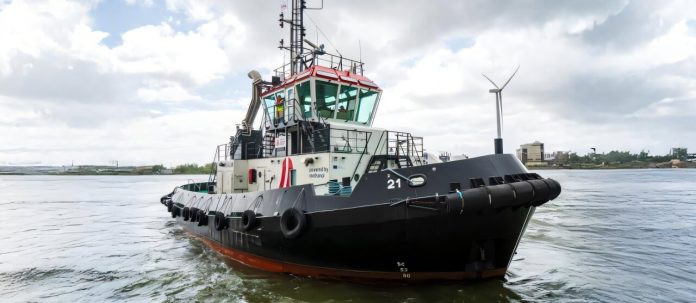
In the Swedish port of Oxelösund, a small orange pilot boat quietly carries a big secret.
Instead of running on traditional diesel fuel, it’s powered by methanol—an alcohol-based fuel that could help reshape the future of shipping.
Though it looks like an ordinary vessel guiding larger ships into harbor, it represents a major step in reducing the industry’s impact on the planet.
Shipping is responsible for about 3% of global greenhouse gas emissions. With international trade only growing, finding clean alternatives to diesel is urgent.
Methanol is emerging as one of the most promising options. Researchers say it could cut emissions from ships by more than 80%, and projects across Europe are now proving it can work in practice.
One of the most ambitious efforts is FASTWATER, an international collaboration involving shipyards, engine manufacturers, equipment suppliers, ports, methanol producers, and research institutes.
Their goal is to develop scalable solutions to retrofit existing ships with methanol-powered engines while also designing new vessels that can run on the fuel.
They are also working to train crews, adapt safety standards, and build a sustainable supply chain.
Methanol has a key advantage over other clean fuels like hydrogen: it’s compact. Batteries and hydrogen tanks take up enormous amounts of space, which is impractical for ships that need to store large amounts of energy to travel long distances. Methanol, on the other hand, packs more energy into smaller volumes, making it easier to use on a variety of vessels.
The FASTWATER team has already tested methanol propulsion on four very different ships: a Swedish pilot boat, a German river cruise ship, a Greek coastguard vessel, and a harbor tugboat. In Sweden, engineers simply replaced the pilot boat’s diesel engine with a methanol one.
That required changes to the ship’s fuel system, including a double-walled methanol tank, leak detectors, and new safety protocols. It also meant retraining the crew, who had years of experience with diesel but suddenly had to master a new kind of fuel.
In Belgium, a tugboat called Methatug became the world’s first dual-fuel methanol tug in 2024. Developed with the Port of Antwerp-Bruges, it can run on up to 80% methanol, storing 12,000 liters onboard—enough for two weeks of operations.
Despite its cleaner fuel, it delivers the same power as a conventional tug while drastically cutting emissions. The project is part of the port’s push to become climate-neutral by 2050.
Still, the transition is not without challenges. Safety regulations for methanol in shipping are still catching up, and researchers had to navigate uncertainty, particularly around fire safety. Methanol is more flammable than diesel, so stricter standards are required.
Another major hurdle is supply. For methanol to be truly sustainable, it must come from renewable sources. This “green methanol” can be made from captured carbon dioxide and renewable hydrogen, or from biomass and waste materials. But right now, global production is limited, and scaling it up will take time.
The Swedish pilot boat currently runs on biomethanol made from wood pulp waste—a circular solution that highlights the potential. But to power fleets worldwide, the industry will need a steady supply of green methanol. EU climate legislation, such as the new FuelEU Maritime Regulation, is designed to speed up the shift by setting emission targets and encouraging renewable fuels.
According to FASTWATER coordinator Sebastian Verhelst, who has spent years pioneering clean fuel technologies, momentum is building. “Large ship operators are beginning to show their commitment to methanol,” he said. “Hopefully this will lead to major advances in the near future.”
For now, a handful of retrofitted ships in Europe may not seem like much. But together, they mark the beginning of a sea change—one where methanol could power the next generation of cleaner, greener shipping.
Source: KSR.



